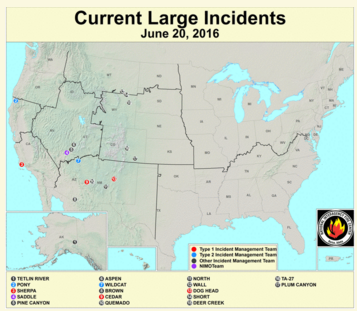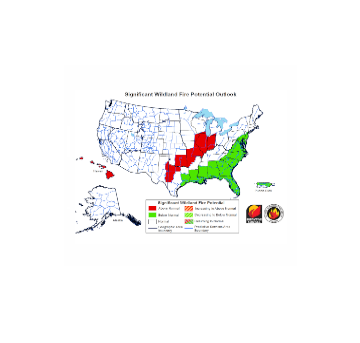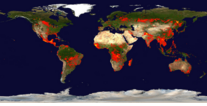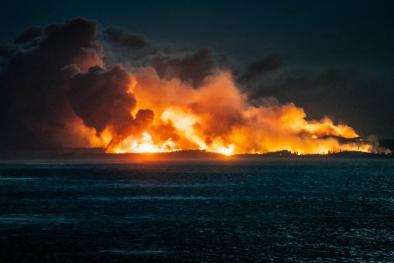Science Source
The Age of Alaskan Wildfires
Climate Central's analysis of 65 years of Alaska wildfire data shows:
- The number of large wildfires (larger than 1,000 acres) suddenly increased in the 1990s, and the 2000s saw nearly twice as many large wildfires as the 1950s and 60s
- In the Arctic region, the number of large wildfires increased nearly tenfold in the 2000s compared to the 1950s and 60s. Only three years in the 1950s and 1960s saw large wildfires; there have been 33 large wildfires in the Arctic since 2000
- The area burned in large wildfires each year is increasing. In just two years, 2004 and 2005, wildfires burned a larger area than in the 15 years from 1950-1964 combined. In particular, there has been a dramatic increase in wildfires larger than 10,000 acres but smaller than 50,000 acres
- Alaska’s wildfire season is about 40 percent longer now than it was in the 1950s. The first wildfires start earlier in the year, and the last wildfires are burning longer into the fall. Overall, the wildfire season has increased more than 35 days and is now more than three months long, running from May through early August
- Rising temperatures across Alaska have been concurrent with the rise in the number and size of Alaskan wildfires. Years with the hottest May-July temperatures also tend to be years with the most fires, and the greatest area burned
- According to the National Climate Assessment, the amount of area burned in Alaskan wildfires is projected to double by 2050 and triple by 2100 under continued emissions and further warming
Related Content
Real Time Data

Jun 20, 2016 | Remote Sensing Applications Center / USDA Forest Service
US Current Large Wildfire Incidents
Real Time Data

Feb 25, 2016 | National Interagency Coordination Center
Significant Wildland Fire Potential Outlook
Real Time Data

Feb 25, 2016 | NASA EarthData
Global Fire Map
Headline

Feb 11, 2016 | AP
Report: Trees scorched by 2015 Kodiak wildfire likely to die


